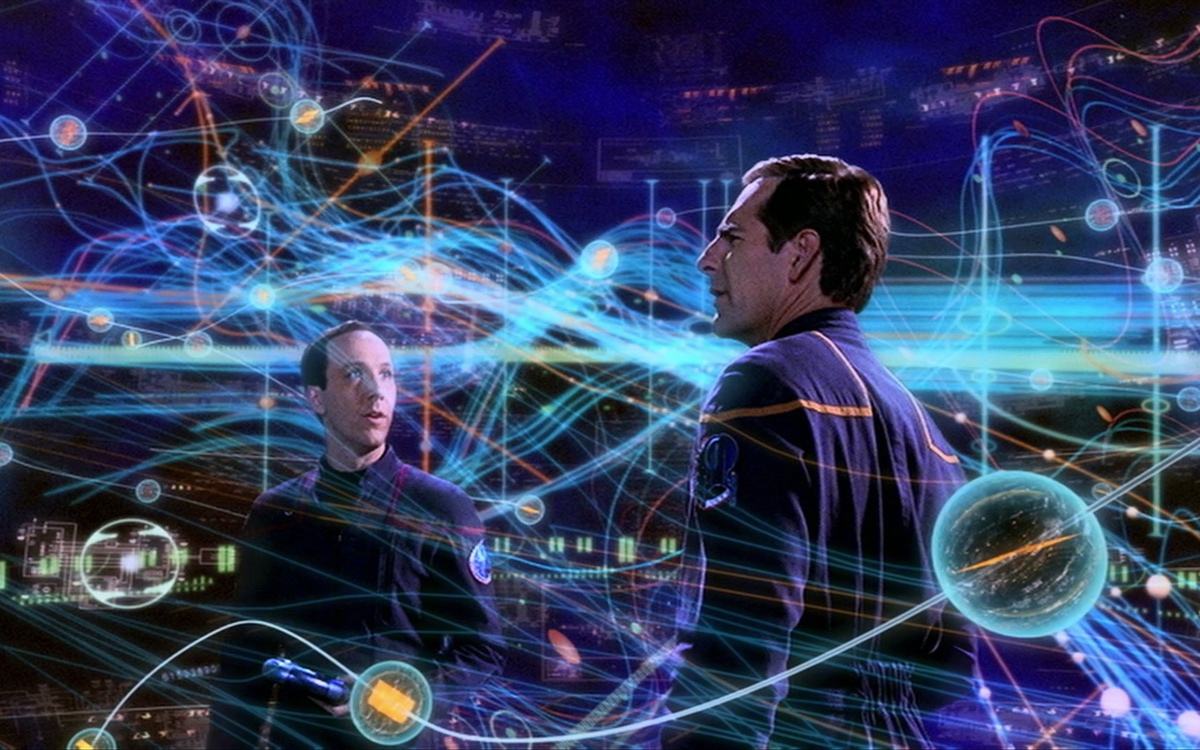A Trekkie’s Guide To Navigating the Star Trek Timeline


With a narrative that spans seven decades and more than three times as many shows and movies, determining how to watch Star Trek might seem like a daunting prospect. Whether you’re new to the franchise or want to know how to watch the series following the in-universe chronology, this guide should help.
What is a stardate?
To avoid placing Star Trek in a specific century, the franchise has its own system of time: the stardate system. Originally inspired by the Modified Julian date system used by astronomers, writers, and producers have selected numbers using different methods over the years (some more arbitrary than others), which makes it impossible to convert all of the stardates to equivalent calendar dates.
What to know about the Star Trek timeline?
How time works in Star Trek, and how it’s impacted by Starfleet’s time travel shenanigans, is debated amongst the most devoted followers of the Church of Trek. But for casual fans, the first thing it’s necessary to know is that the Star Trek Universe consists of two timelines: the prime timeline and the Kelvin timeline. Although two timelines exist, most of the franchise’s films, shows, and tie-ins take place on the prime timeline.
The second thing to know is that Star Trek’s timelines are always subject to change. Due to the nature of time travel in the franchise, entries appearing earlier on the prime timeline can be impacted and changed (very important to remember) by events that happen later on. For example, the Star Trek: Enterprise season 2 episode “Regeneration” follows up on the events of Star Trek: First Contact.
How to watch the Star Trek prime timeline in chronological order
Here’s how to watch Star Trek‘s prime timeline in chronological order:
Star Trek: Enterprise (stardates: 2151 – 2155)
Star Trek: The Original Series pilot “The Cage” (stardate: 2254)
Star Trek: Discovery seasons 1 and 2 (stardates: 2256 – 2258)
Star Trek: Strange New Worlds (stardates: 2259 – 2260)
Star Trek: The Original Series (stardates: 2265 – 2269)
Star Trek: The Animated Series (stardates: 2269 – 2270)
Star Trek: The Motion Picture (stardate: 2272)
Star Trek II: The Wrath of Khan (stardate: 2285)
Star Trek III: The Search for Spock (stardate: 2285)
Star Trek IV: The Voyage Home (stardate: 2286)
Star Trek V: The Final Frontier (stardate: 2287)
Star Trek VI: The Undiscovered Country (stardate: 2293)
Star Trek: The Next Generation (stardates: 2364 – 2370)
Star Trek: Deep Space Nine (stardates: 2369 –2375)
Star Trek Generations (stardate: 2371 and some in 2293)
Star Trek: First Contact (stardate: 2373)
Star Trek: Insurrection (stardate: 2375)
Star Trek: Voyager (stardates: 2371 –2378)
Star Trek: Nemesis (stardate: 2379)
Star Trek: Lower Decks (stardates: 2380 – 2381)
Star Trek: Prodigy (stardates: 2383 – 2384)
Star Trek: Picard (stardates: 2399 – 2402)
Star Trek: Discovery seasons 3 and 4 (stardates: 3188 – 3190)
What about the J.J. Abrams’ Star Trek movie trilogy?
As touched on above, there are two timelines in Star Trek. The J.J. Abrams movies take place on the Kelvin timeline, a parallel timeline created when a 24th-century Romulan, Nero, travels back in time to 2233 (between Ent and Disco season 1, for those keeping track) and splits the timelines in two.
Most of the Kelvin timeline takes place around the TOS‘s timeframe but on an alternate timeline. Well, at least so far.
Here’s how to watch all three movies in the Kelvin timeline in chronological order:
Star Trek (2233)
Star Trek Into Darkness (2259 – 2260)
Star Trek Beyond (2263)
(featured image: Paramount Pictures)
Have a tip we should know? [email protected]